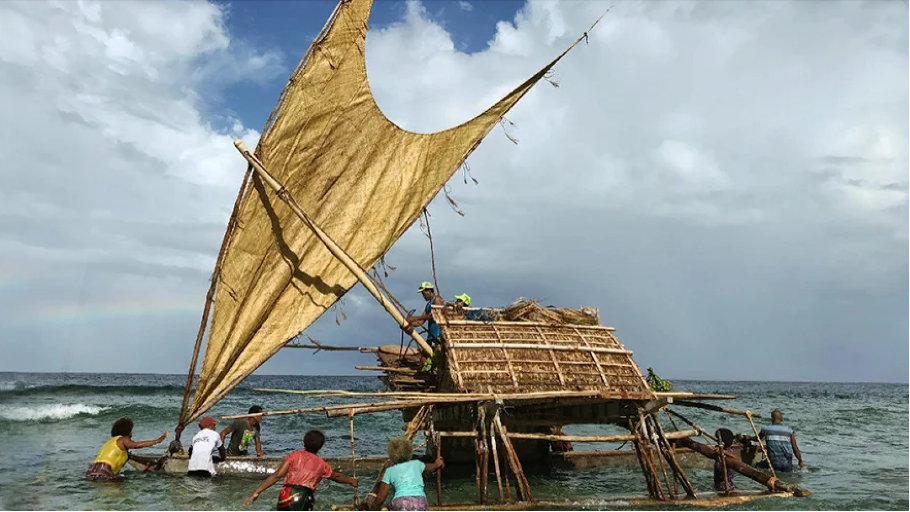Healing Through Archaeology
- Ariana O'Brien

- Dec 7, 2022
- 4 min read
Updated: Jan 30, 2023
Lower Elwha Klallam and Tse-whit-zen: Healing made possible by an archaeological catastrophe.

“Lower Elwha Klallam Tribal Chairwoman Frances Charles looks over a display containing a spindle whorl for spinning fibers after the unveiling of tribal artifacts now on display at the Elwha Klallam Heritage Center in Port Angeles.” (1) --> A community-run museum holding cultural items that were excavated by members of that community. This a beautiful example of healing through connecting with cultural objects.
What Is NAGPRA?
NAGPRA stands for the Native American Protection and Repatriation Act that was passed by congress in 1990. NAGPRA legally requires museums to return burial items and ancestral human remains to the appropriate descendant Indigenous communities. (2)
Why Repatriation Matters
In the words of James Riding In, a member of the Pawnee Nation and assistant professor at Arizona State University, “concerning repatriation, I simply advocate that American Indians receive what virtually every other group of American enjoys, that is, the right to religious freedom and lasting burial” (as published in American Indian Quarterly in his Article "Repatriation; A Pawnee's Perspective). Riding In then goes on to talk about the Indigenous notion that death "merely marks the passage of the human spirit to another state of being," and by disturbing the remains, archaeologists are inhibiting that journey and peace that is so valued in these communities (in any community really). (8)
Healing <3
There are 3 broad different ways in which community members experience healing through archaeology:
Doing the work of repatriation or community-based archaeology (writing claims, NAGPRA grants, preparing human remains and cultural items for reburial, reinstituting traditional protocols or traditional knowledge practices, identifying and reclaiming songs and language, archaeological fieldwork, community mapping of sacred sites)
Holistically relating or sharing their experiences of doing the work with other community members and/or the public.
Hearing the stories and experiences shared by community members directly involved in doing the work. (3)
When even just a few community members participate in doing the work, healing has the potential to not only spread through the whole present community, but can also simultaneously create healing in past and future generations as well.
Why Is This Important And How Did We Get Here?
Western science has a history where “White folks (usually heterosexual men) do the research, and Indians, other people of color, women, the disabled, the perverse, get gazed upon, poked, prodded, bled, measured, photographed, and written about." (4) This idea of "othering" is why Native peoples have been excluded from their archaeological heritage and exactly why the ethics of repatriation needs to be prioritized in modern archaeology. Archaeology is historically a tool of colonialism, but when Indigenous people have a place of authority in archaeology, that same tool can then be used to heal those historical traumas.
Archaeology has historically supported the logic of elimination, which erases Indigenous presence by placing Native peoples in the past to justify settler colonialism. --> ties into why archaeologists have been so comfortable studying ancestors without acknowledging descendent communities.
Many Indigenous knowledge systems value living a life in balance to create/maintain a sustainable future. (5) By orienting archaeology and repatriation around healing, it allows for a future where Indigenous communities can reclaim ancestral balance to sustain the health and well-being of mind, body, and soul of descendants.
What Happened at Tse-Whit-Zen?
An insufficient archaeological assessment (and lack of consultation) before a dock construction in Port Angeles resulted in the damage of 276 burials, but the community (Lower Elwha Klallam) got to work with archaeologists to recover and care for their ancestors. (6)
"healing made possible by an archaeological catastrophe"
Community-based/Indigenous archaeology isn’t just Indigenous people being present for archaeological work, it's communities taking archaeology into their own hands. All that hard work and every movement is an act of love for their ancestors and community, and an act of resistance to archaeology's historical power dynamics.
Tribal elders have said that one of the most exciting parts of the discovery of the site was seeing tribal youth discover their culture with their own hands and heart. (7)
Not only life-changing and educating for the youth, but for the elders too.
Some community members taught themselves how to make tools that were uncovered, while others found belongings to inspire art.
“It changed us. . . . It felt like home down there, like the same family feeling between a mother and a child, a warm feeling. It was a sense of home, it was a sense of stillness—this is where we belong. Dignity. I didn’t feel naked anymore. It was a spiritual connection” (Carmen Watson-Charles, Klallam. 2009.
What started out as a traumatic event, led to a stronger connection to culture and history, as well as community healing.
Referenced Works:
(1) SCHWARTZ, JEREMY. “COMING HOME: RETURN OF TSE-WHIT-ZEN ARTIFACTS 'GREAT DAY FOR EVERYONE'.” PENINSULA DAILY NEWS, 10 NOV. 2017, HTTPS://WWW.PENINSULADAILYNEWS.COM/NEWS/COMING-HOME-RETURN-OF-TSE-WHIT-ZEN-ARTIFACTS-GREAT-DAY-FOR-EVERYONE-2/.
(2) DUNBAR-ORTIZ, ROXANNE. AN INDIGENOUS PEOPLES' HISTORY OF THE UNITED STATES. VOL. 3. BEACON PRESS, 2014.
(3) ATALAY, SONYA. "BRAIDING STRANDS OF WELLNESS: HOW REPATRIATION CONTRIBUTES TO HEALING THROUGH EMBODIED PRACTICE AND STORYWORK." THE PUBLIC HISTORIAN 41.1 (2019): 78-89.
(4) TALLBEAR, KIM. “KIM TALLBEAR: SCIENCE AND WHITENESS.” YOUTUBE, YOUTUBE, 28 JAN. 2016, HTTPS://WWW.YOUTUBE.COM/WATCH? V=PZVKVBGB4S4.
(5) HAAKANSON, SVEN. INDIGENOUS BALANCE, 2020.
(6) READE, DEBORAH. “COAST SALISH TERRITORIES MAPS.” PERPETUAL SALISH, 2014, HTTPS://LEGACY.UVIC.CA/GALLERY/SALISHCURRICULUM/COAST-SALISH-TERRITORIES-MAPS/.
(7) SCHAEPE, DAVID M., ET AL. "ARCHAEOLOGY AS THERAPY: CONNECTING BELONGINGS, KNOWLEDGE, TIME, PLACE, AND WELL-BEING." CURRENT ANTHROPOLOGY 58.4 (2017): 502-533.
(8) In, James Riding. “Repatriation: A Pawnee’s Perspective.” American Indian Quarterly, vol. 20, no. 2, 1996, pp. 238–50. JSTOR, https://doi.org/10.2307/1185703. Accessed 15 Dec. 2022.



Comments